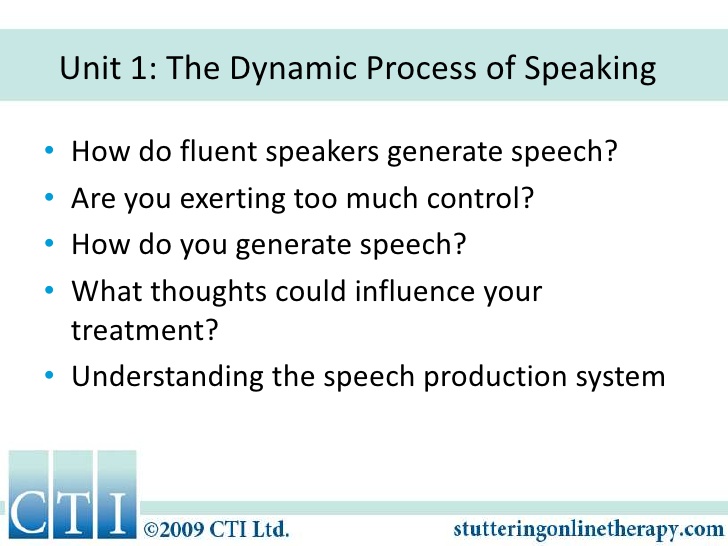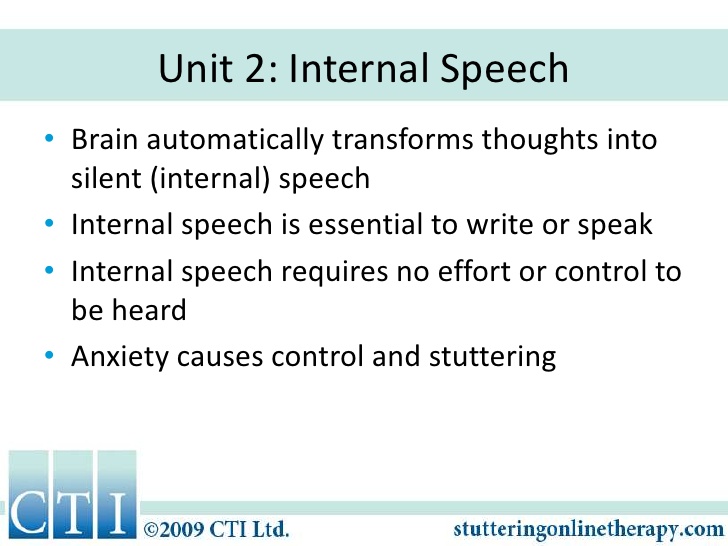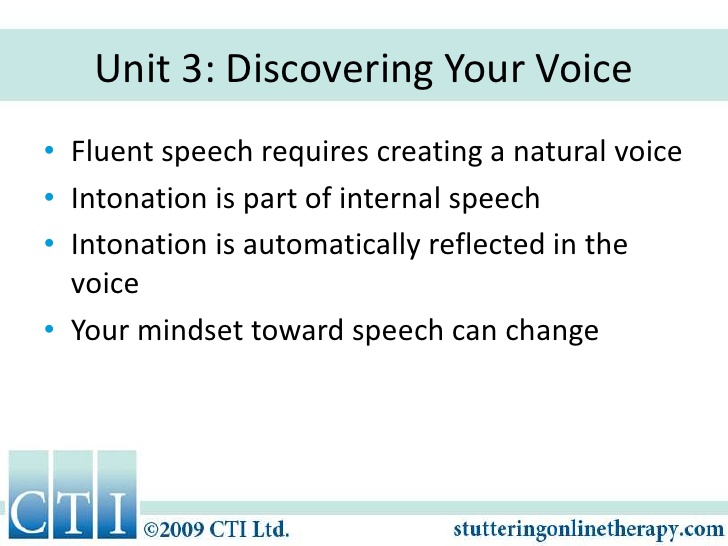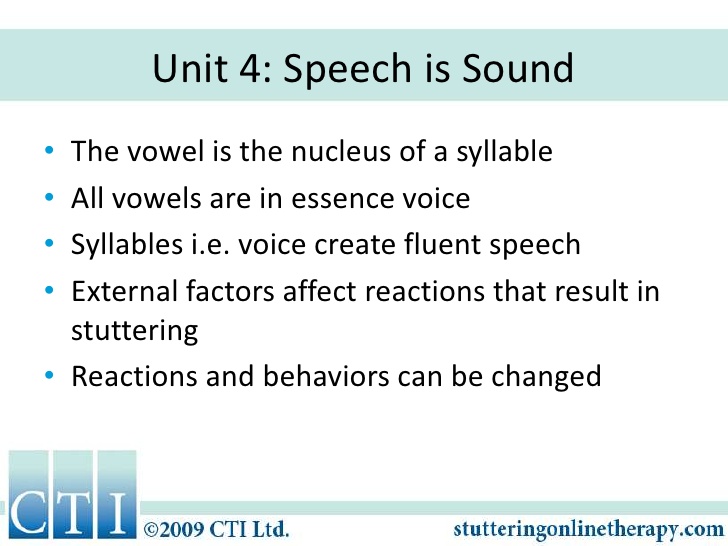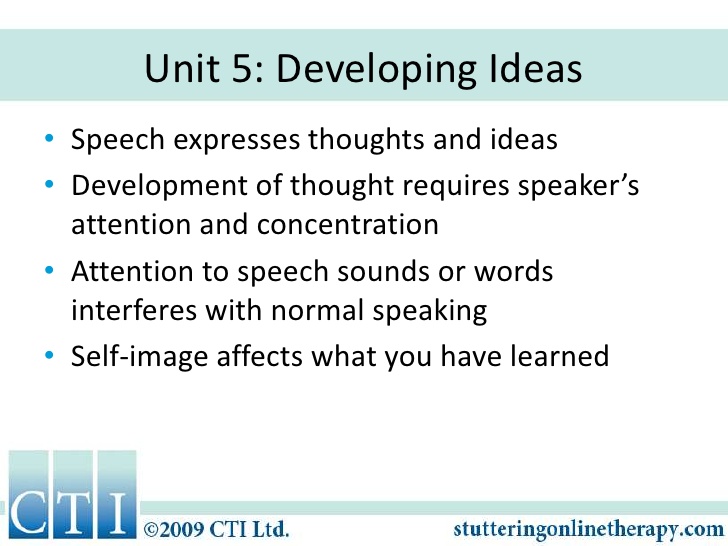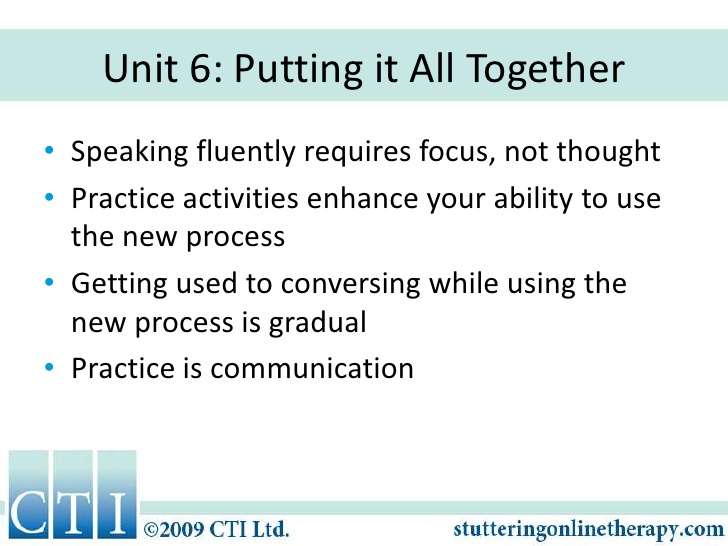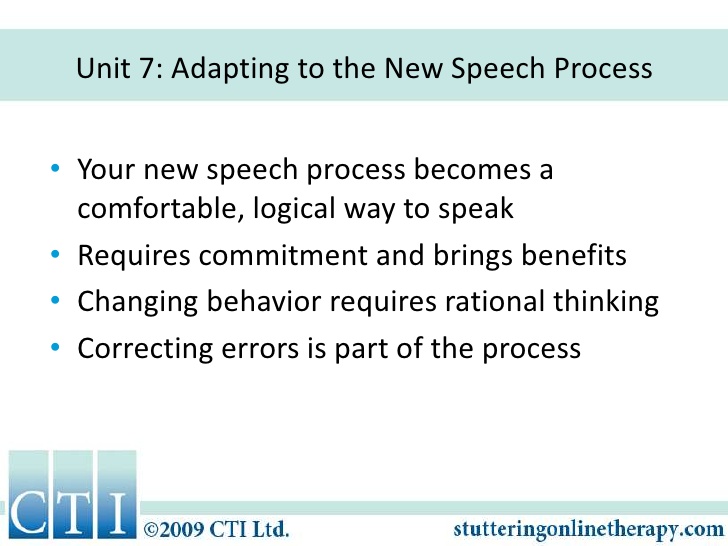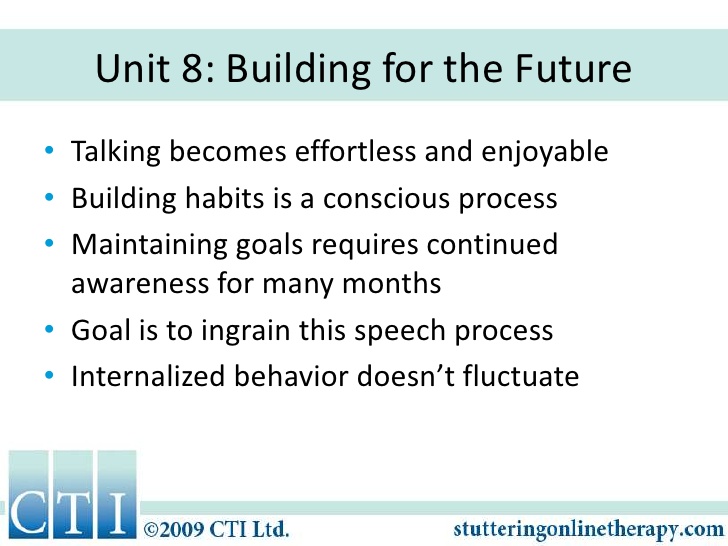Take a peek inside to see what you will find in the Dynamic Stuttering Workbook.
Each unit is packed with activities that are designed to bring people who stutter on an exciting journey that shows them the why, what and how of speaking naturally. The goals of each unit is clearly defined so that, if you choose, you will be able to create other activities as well that will lead you to be where you need to be at each stage in the process of change.
To purchase the workbook click here

Unit 1 - The Dynamic Process of Speaking
| Goals | Activities |
|---|---|
| To gain a general understanding of the normal processes of speech production | Activity 1: Obtaining a speech sample |
| To gain awareness of how the system generates stuttered speech | Activity 2: Exploring how you produce speech |
| To become aware of your readiness to change the way you generate speech | Activity 3: Deciding if you are ready for the process of change |
| Activity 4: Exploring thoughts that prevent change |
Unit 2 - Internal Speech
| Goals | Activities |
|---|---|
| To experience automatically formulated internal speech | Activity 1: Developing awareness of your internal speech |
| To focus on internal speech when speaking aloud | Activity 2: Speaking silently |
| To allow articulation to automatically reflect internal speech | Activity 3: Formulating internal speech silently and aloud |
| To reduce speech related avoidance behaviors | Activity 4: Identifying avoidance behaviors |
| To talk openly about the subject of stuttering | Activity 5: Talking about stuttering |
Unit 3 - Discovering Your Voice
| Goals | Activities |
|---|---|
| To experience your natural voice | Activity 1: Exploring how you create a speaking voice |
| To focus internally on sending energy to your vocal folds | Activity 2: Generating a speaking voice with ease |
To generate your voice as an isolated activity | Activity 3: Focusing internally to generate your voice |
| To allow your voice to reflect the intonation pattern of your internal speech | Activity 4: Generating voice while doing other things |
| To develop a new mindset as a speaker | Activity 5: Changing the tone of your voice |
| Activity 6: Developing a new mindset as a speaker |
Unit 4 - Speech Is Sound
| Goals | Activities |
|---|---|
| To develop your awareness that speech is a progression of syllables | Activity 1: Generating single and connected syllables |
| To understand the acoustic nature of syllables | Activity 2: Generating syllables in reading and speaking |
| To generate syllables as an impulse to the voice | Activity 3: Producing one syllable at a time |
| To use syllables as the unit for generating speech | Activity 4: Building spontaneous speech as a progression of syllables |
| To understand how various factors result in stuttered speech | Activity 5: Analyzing how various factors result in stuttering |
Unit 5 - Developing Ideas
| Goals | Activities |
|---|---|
| To focus on thoughts, including imagination, memory, and knowledge when generating speech | Activity 1: Using imagination to generate speech |
| To formulate all aspects of language automatically | Activity 2: Concentrating on visual images |
| To send energy to the vocal folds while developing thoughts | Activity 3: Concentrating on images in the mind's eye |
| To begin using the new speech production process in various speaking situations | Activity 4: Developing ideas spontaneously |
| To build a self-image of a person who is able to speak with ease | Activity 5: Spontaneous conversations |
| To become aware of your progress | Activity 6: Broadening your circles of communication |
| Activity 7: Building your self-image as a speaker | |
| Activity 8: Analyzing your progress |
Unit 6 - Putting It All Together
| Goals | Activities |
|---|---|
| To use parallel processing of all system functions | Activity 1: Practicing in steps |
| To get used to focusing on thoughts and ideas | Activity 2: Pretending to be a ventriloquist |
| To let go of control over language formulation | Activity 3: Simultaneous writing and speaking |
| To get used to making vowels as an impulse to the voice | Activity 4: The pros and cons of change |
| To get used to letting your mouth move automatically | Activity 5: Finding solutions to problems |
| To weigh the value of changing the way you generate speech | |
| To develop the ability to solve problems | |
Unit 7 - Adapting To the New Speech Process
| Goals | Activities |
|---|---|
| To gain more experience in using your speech generating system the new way | Activity 1: More experience in reading |
| To gain confidence in your ability to speak automatically | Activity 2: More experience in spontaneous speech |
| To self-correct errors with ease | Activity 3: Developing the neural network for fluent speech |
| To make a commitment to adopt the new way of speaking in your life | Activity 4: Making a commitment for change |
| To think rationally about the speaking experience | Activity 5: Approaching the speaking experience rationally |
| To find ways to reinforce your efforts | Activity 6: Rewarding change |
Unit 8 - Building for the Future
| Goals | Activities |
|---|---|
| To use your new way generating speech in a variety of situations | Activity 1: Telephone talk |
| To make a realistic appraisal of the progress you have made | Activity 2: Face to face talking |
| To make your new way of speaking a habit | Activity 3: Building a new habit |
| To set goals for the future | Activity 4: Continuing to analyze your progress |
| To help yourself by promoting an understanding of stuttering | Activity 5: Promoting an understanding of stuttering |
| To realize that you can continue the therapy process during your life | Activity 6: Maintaining achievements |
| To explore ways of strengthening and maintaining achievements |



